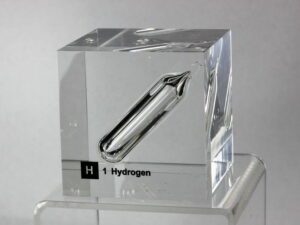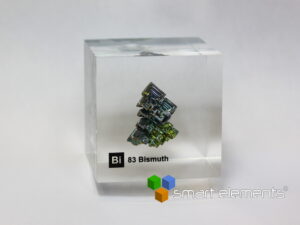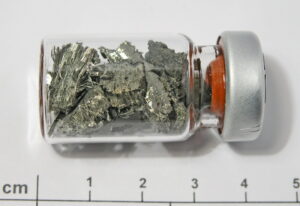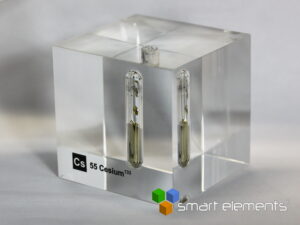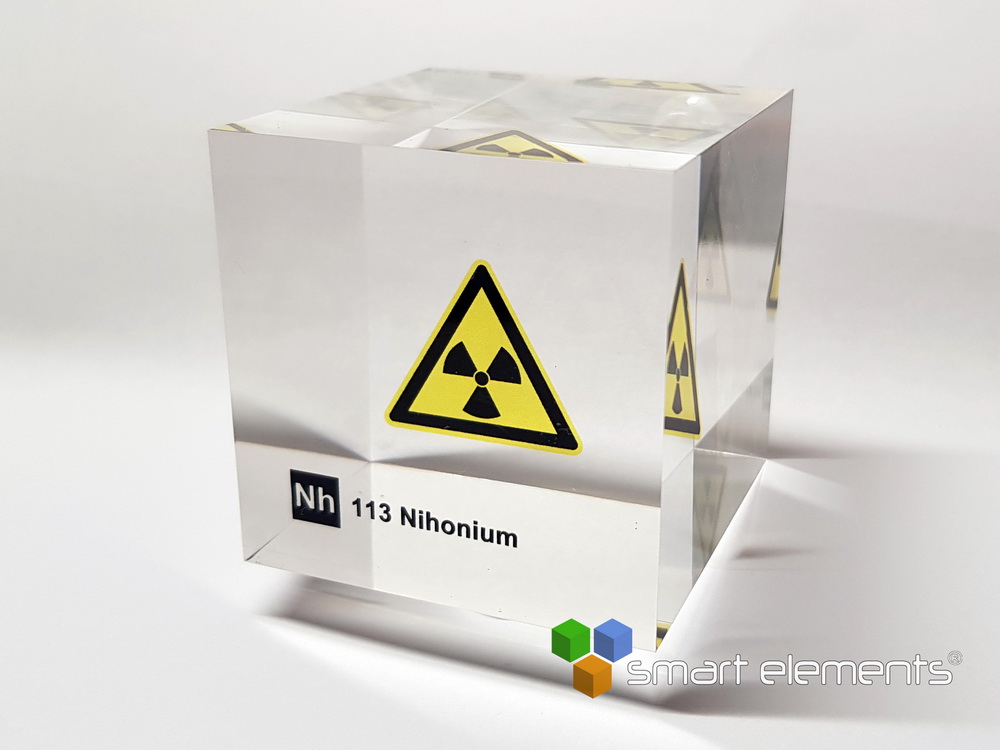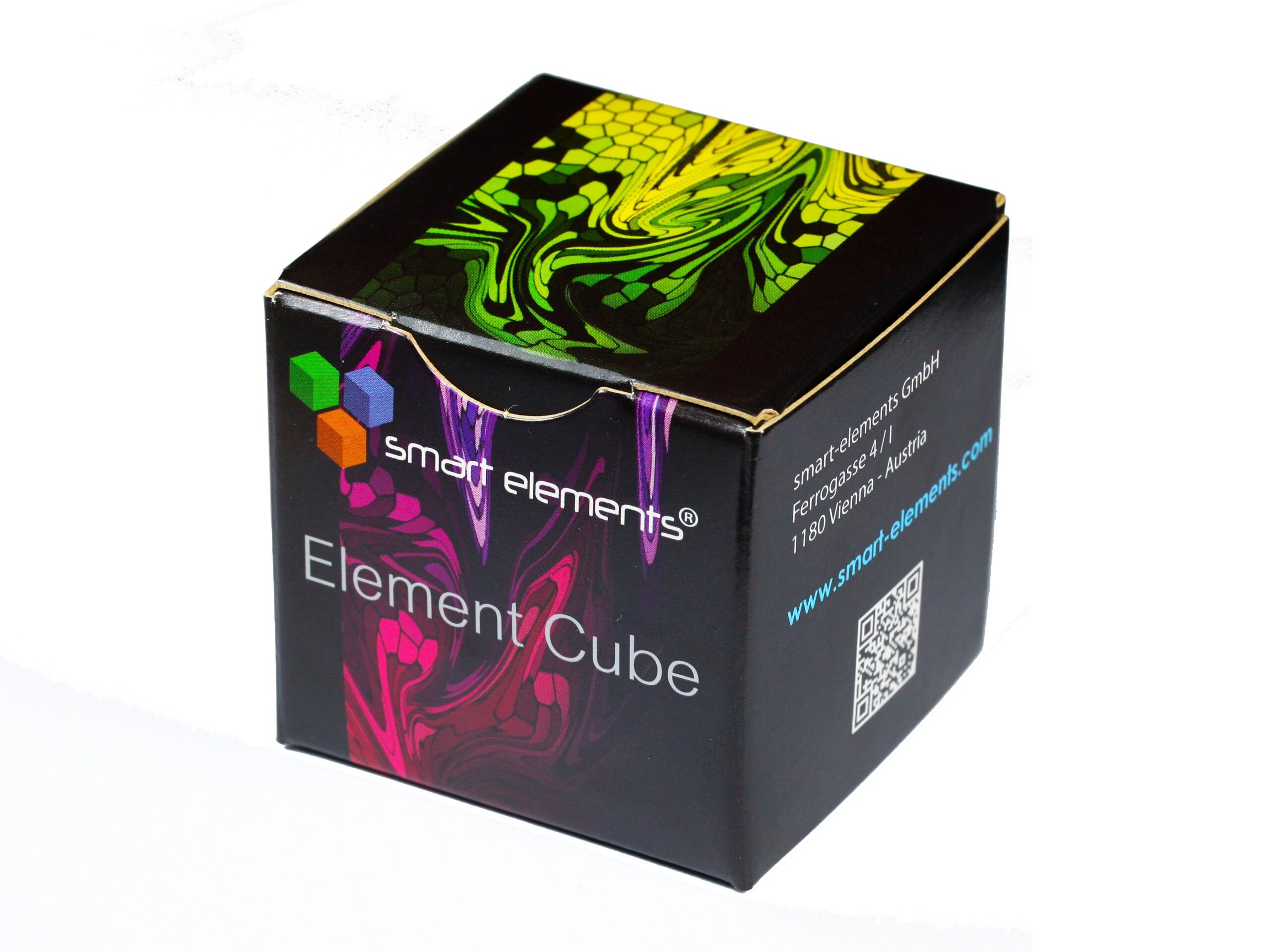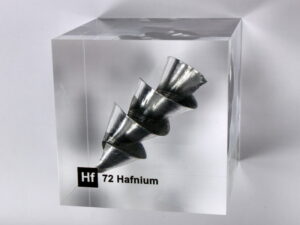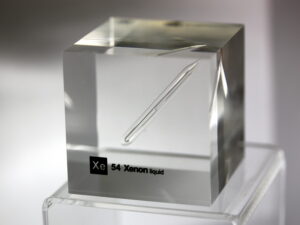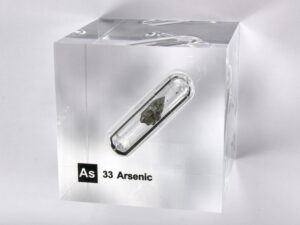The Sensation! Acrylic Element-blocks NEW!
113-Nihonium- placeholder – Radioactive symbol ONLY – Does not contain any physical material!
Nihonium is a synthetic chemical element with the symbol Nh and atomic number 113. It is extremely radioactive; its most stable known isotope, nihonium-286, has a half-life of about 10 seconds. In the periodic table, nihonium is a transactinide element in the p-block. It is a member of period 7 and group 13 (boron group).
Nihonium was first reported to have been created in 2003 by a Russian–American collaboration at the Joint Institute for Nuclear Research (JINR) in Dubna, Russia, and in 2004 by a team of Japanese scientists at Riken in Wakō, Japan. The confirmation of their claims in the ensuing years involved independent teams of scientists working in the United States, Germany, Sweden, and China, as well as the original claimants in Russia and Japan. In 2015, the IUPAC/IUPAP Joint Working Party recognized the element and assigned the priority of the discovery and naming rights for the element to Riken, as it judged that they had demonstrated that they had observed element 113 before the JINR team did so. The Riken team suggested the name nihonium in 2016, which was approved in the same year. The name comes from the common Japanese name for Japan (日本, Nihon).
Very little is known about nihonium, as it has only been made in very small amounts that decay away within seconds. The anomalously long lives of some superheavy nuclides, including some nihonium isotopes, are explained by the “island of stability” theory. Experiments support the theory, with the half-lives of the confirmed nihonium isotopes increasing from milliseconds to seconds as neutrons are added and the island is approached. Nihonium has been calculated to have similar properties to its homologues boron, aluminium, gallium, indium, and thallium. All but boron are post-transition metals, and nihonium is expected to be a post-transition metal as well. It should also show several major differences from them; for example, nihonium should be more stable in the +1 oxidation state than the +3 state, like thallium, but in the +1 state nihonium should behave more like silver and astatine than thallium. Preliminary experiments in 2017 showed that elemental nihonium is not very volatile; its chemistry remains largely unexplored.

